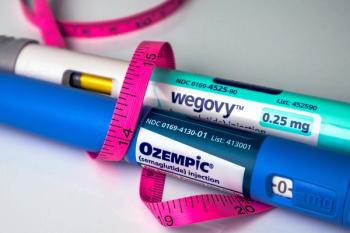
Biosimilar naming method questioned
FDA’s method for naming biosimilars and interchangeable biologics came under fire long before the first biosimilar, Zarxio, was approved last spring.
FDA’s method for naming biosimilars and interchangeable biologics came under fire long before the first biosimilar, Zarxio, was approved last spring.
Some physicians and pharmacists worry that using a nonproprietary proper name that includes a base active ingredient name plus a randomly-assigned four-letter suffix, such as the newly approved etanercept-szzs (Erelzi), will lead to prescribing errors and confusion.
“We have advocated for a prefix on biosimilar names because, when you look at a screen, and you have a drug name that is 10 to 12 characters long, [prescribers and pharmacists] may just see the beginning of the name and not the suffix,” said Robert T. Adamson, PharmD, chief pharmacy officer, corporate pharmacy, for Barnabas Health in West Orange, N.J.
However, the four-character suffixes are meant to improve safety, according to FDA, which is asking the industry for input on its draft guidance,
“The goal of this naming convention is to help minimize inadvertent substitution. Inadvertent substitution may lead to unintended alternating or switching of biological products that have not been determined by FDA to be interchangeable,” FDA said in the draft guidance document. “This naming convention may also facilitate pharmacovigilance for multiple biological products containing related drug substances when other means to track a specific dispensed product are not readily accessible.”
According to a recent survey, most pharmacists prefer FDA’s method of biosimilar naming with a nonproprietary proper name plus a suffix. In fact, 48% of 781 members of the Academy of Managed Care Pharmacy and the Hematology/Oncology Pharmacy Association surveyed prefer this method, according to the
This preference was also reported by managed care organizations (50.2%) and hospital pharmacists (44.4%). “All employment sectors reported a preference for the nonproprietary name plus suffix, except those practicing in specialty pharmacy, who expressed a preference for using strictly the nonproprietary name (38.5% percent preferred active ingredient only and 34.6% preferred active ingredient plus suffix),” the authors wrote.
However, pharmacists who prefer the nonproprietary name plus suffix preferred the use of a suffix tied to the manufacturer name (83.4%), compared with the random assignment of a 4-letter suffix (16.6%). Nonproprietary (active ingredient) name only was the second most preferred naming convention at 26.3%.
The least preferred biosimilar naming conventions included the use of unique brand names and the use of a nonproprietary names plus a prefix. Hospital pharmacists and pharmacists representing academia preferred the use of a prefix plus nonproprietary name (29.1% and 29.7% respectively) over the nonproprietary name only convention.
Another barrier to dispensing biosimilars is how pharmacists feel about FDA’s proposed requirement to notify prescribers after they have dispenses a biosimilar. “A majority of participants (64.9%) reported perceptions of increased burden when required to provide a post-dispense notification to prescribers when dispensing biosimilars,” the authors wrote.
When asked if a post-dispensing reporting requirement would affect their likelihood of dispensing a biosimilar, 44.4% said it would not have an effect. However, 27.7% of pharmacists surveyed said the mandate would make them less likely to dispense a biosimilar or were unsure of its effect currently (24.3%).
Newsletter
Pharmacy practice is always changing. Stay ahead of the curve with the Drug Topics newsletter and get the latest drug information, industry trends, and patient care tips.




